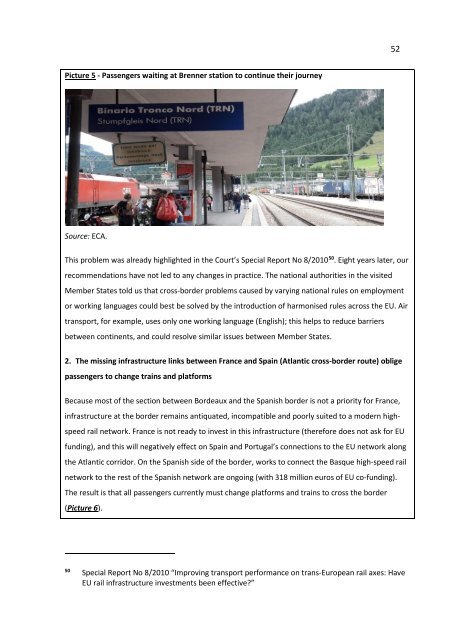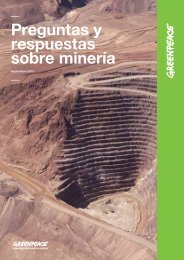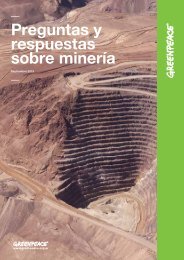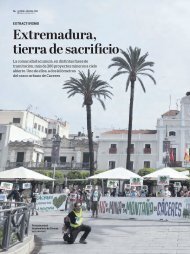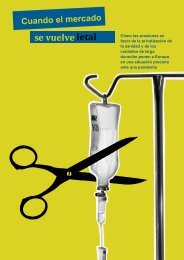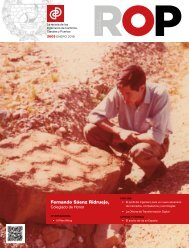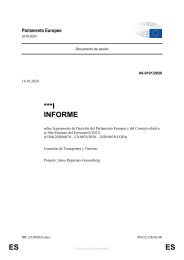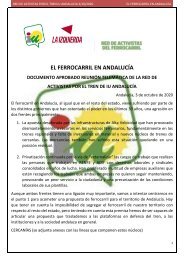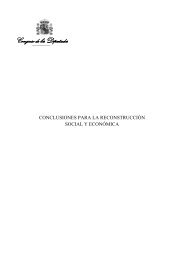La Red de Alta Velocidad Europea: Más un mosaico poco efectivo que una realidad
El presente comunicado de prensa tiene por objeto ofrecer una síntesis del contenido esencial del informe especial del Tribunal de Cuentas Europeo. El texto íntegro del informe puede consultarse en www.eca.europa.eu.
El presente comunicado de prensa tiene por objeto ofrecer una síntesis del contenido esencial del informe especial del
Tribunal de Cuentas Europeo.
El texto íntegro del informe puede consultarse en www.eca.europa.eu.
Create successful ePaper yourself
Turn your PDF publications into a flip-book with our unique Google optimized e-Paper software.
52<br />
Picture 5 - Passengers waiting at Brenner station to continue their journey<br />
Source: ECA.<br />
This problem was already highlighted in the Court’s Special Report No 8/2010 50 . Eight years later, our<br />
recommendations have not led to any changes in practice. The national authorities in the visited<br />
Member States told us that cross-bor<strong>de</strong>r problems caused by varying national rules on employment<br />
or working languages could best be solved by the introduction of harmonised rules across the EU. Air<br />
transport, for example, uses only one working language (English); this helps to reduce barriers<br />
between continents, and could resolve similar issues between Member States.<br />
2. The missing infrastructure links between France and Spain (Atlantic cross-bor<strong>de</strong>r route) oblige<br />
passengers to change trains and platforms<br />
Because most of the section between Bor<strong>de</strong>aux and the Spanish bor<strong>de</strong>r is not a priority for France,<br />
infrastructure at the bor<strong>de</strong>r remains antiquated, incompatible and poorly suited to a mo<strong>de</strong>rn highspeed<br />
rail network. France is not ready to invest in this infrastructure (therefore does not ask for EU<br />
f<strong>un</strong>ding), and this will negatively effect on Spain and Portugal’s connections to the EU network along<br />
the Atlantic corridor. On the Spanish si<strong>de</strong> of the bor<strong>de</strong>r, works to connect the Bas<strong>que</strong> high-speed rail<br />
network to the rest of the Spanish network are ongoing (with 318 million euros of EU co-f<strong>un</strong>ding).<br />
The result is that all passengers currently must change platforms and trains to cross the bor<strong>de</strong>r<br />
(Picture 6).<br />
50<br />
Special Report No 8/2010 “Improving transport performance on trans-<strong>Europea</strong>n rail axes: Have<br />
EU rail infrastructure investments been effective?”


